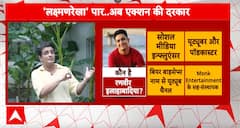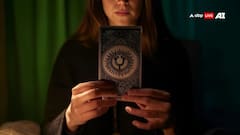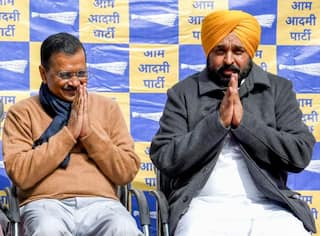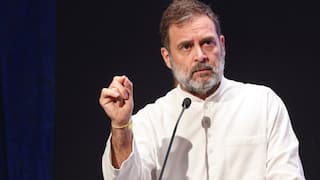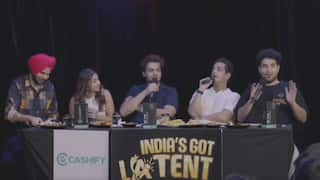When Is Eid-al-Fitr? History, Significance All You Need To Know About The Festival
On the occasion of Eid, people wear new clothes and prepare various delicacies at home. In this article, we will delve about Eid-ul-Fitr 2024, including its dates, origin, significance, and more.

Eid-al-Fitr 2024: Eid-al-Fitr is one of the biggest Islamic holidays. It's also called 'Meethi Eid' because it marks the end of Ramadan, the holy month of fasting. The celebration of Eid-al-Fitr typically takes place during the first three days of Shawwal, the 10th month in the Hijri (Islamic lunar calendar), immediately after Ramadan. Communal prayer is performed at dawn on the first day of this festival.
Date to celebrated the festival:
In 2024, Eid-al-Fitr is anticipated to occur around April 10th or April 11th. However, the precise date of Eid-al-Fitr changes annually, determined by the sighting of the moon. This date may vary by one or two days, depending on the location.
The celebration starts with special prayers at mosques on the first day of Eid. Muslims around the world come together to eat, pray, and give to charity.
Eid-al-Fitr 2024: History
Eid-al-Fitr has its origins deeply intertwined with Islamic tradition and is closely linked with the sacred month of Ramadan. Its roots can be traced back to the early days of Islam, when Prophet Muhammad migrated from Mecca to Medina.
Eid-al-Fitr 2024: Celebrations
After the prayer at mosques, people begin their celebrations by wishing each other 'Eid mubarak. They also visit one another's place, wear new clothes and enjoy a hearty meal with near and dea ones.
A number of dishes are prepared on this day with sevai being the most prominent sweet dish that defines the festival name, 'Mithi Eid'.
This festival is considered a symbol of brotherhood and peace. Elderly members of the family give gifts or money to the children, calling it Eidi, while food and clothing are donated to the poor.
Dishes To Prepare On This Day:
To celebrate this day with your friends and family, here are some delicious dishes that you can include in your lunch or dinner.
1. Dum Pukht Chicken Biryani (By Pritpal Singh Bakshi, Master Chef, Novotel Goa Candolim)
Ingredients:
- Chicken 750 gms (cleaned and cut into medium pieces)
- Basmati Rice - Soaked for 1 hr before cooking
- Clove
- Green Elaichi
- Dalchini
- Bay Leaves
- Oil
- Green Coriander
- Mint Leaves
- Kesar Milk
- Birista (Golden Fried Onions)
- Kevera Water
For Marination:
- Whole Coriander seeds- 1 teaspoon
- Cloves - 4 to 5 pcs
- Dalchini (Cinnamon)- 3 pieces
- Black pepper - 8-10 seeds
- Green Elachi (Cardamon,) & Black Elachi - 2-3 pieces
- Jeera Whole (Cumin) – 1 teaspoon
- Jai Phal (Nutmeg)- Half
- Jawitree (Maze) – 1 piece
- Degi mirchi - 1 teaspoon
Method:
- Grind all the marination spices in a mixer.
- Add the freshly ground marination to clean-cut chicken along with one cup of curd and a teaspoon of salt.
- Mix all together in chicken and marinate for one hour.
- In another pot, add the pre-soaked basmati rice water and whole herbs like clove(4-5), Green Elachi (1), Dalchini (1 small piece), and Bay leaf ( 2-3) and bring it to a boil.
- When the Rice is cooked at around 80%, remove it from the flame and separate it from the water.
- Now in a separate pan add 4-5 teaspoons of oil and add the marinated chicken and cook for 10-15 mins and then remove it from the flame.
- In a new Handi, add the 1st layer of cooked Rice and add the 2nd layer of the cooked Chicken, and add another top layer of cooked Rice (3rd layer).
- Garnish the top layer with fresh mint leaves and fresh coriander. Also, add a cup of Kesar milk, sprinkle some Golden fried onions and finally add Kevera water.
- Cover the pot with one thick Roomali Roti and dum cook in an oven or Clay Tandoor for 2-5 minutes.
- Now Dum Pukht Biryani is ready to be served with mint raita.
2. Mutton Nalli Nihari (By Chef Ali, The Old Delhi Restaurant)
Ingredients:
- 500 grams mutton nalli (mutton shanks)
- 3 tablespoons oil or ghee (clarified butter)
- 2 onions, finely sliced
- 2 tablespoons ginger-garlic paste
- 2 teaspoons red chilli powder
- 1 teaspoon turmeric powder
- 2 teaspoons coriander powder
- 1 teaspoon fennel seeds (saunf)
- 1 teaspoon cumin seeds
- 4-5 green cardamom pods
- 4-5 cloves
- 1-inch cinnamon stick
- 2 bay leaves
- 2 cups water
- Salt to taste
- Fresh coriander leaves, chopped for garnish
- Ginger slices, for garnish
- Freshly squeezed lemon juice, for serving
For Nihari Masala (Spice Blend):
- 2 teaspoons fennel seeds (saunf)
- 2 teaspoons cumin seeds
- 1 teaspoon black peppercorns
- 1 teaspoon cloves
- 1 teaspoon green cardamom pods
- 1 black cardamom pod
- 2-3 dried red chillies
Method:
- In a dry pan, roast all the ingredients listed under "Nihari Masala" on low heat until fragrant. Allow them to cool and then grind them into a fine powder. Set aside.
- Heat oil or ghee in a large pot or pressure cooker over medium heat. Add the sliced onions and cook until they turn golden brown and caramelized.
- Add ginger-garlic paste to the pot and sauté for a couple of minutes until the raw smell disappears.
- Add the mutton nalli (mutton shanks) to the pot and cook on medium heat until they are browned on all sides.
- Reduce the heat to low and add red chilli powder, turmeric powder, coriander powder, fennel seeds, cumin seeds, green cardamom pods, cloves, cinnamon sticks, and bay leaves. Mix well to coat the meat with the spices.
- Pour in the water and add salt to taste. Stir everything together, cover the pot, and let it simmer on low heat for 2-3 hours until the meat is tender and falls off the bone. If using a pressure cooker, cook for about 30-40 minutes on medium heat after the pressure is built.
- Once the meat is cooked, check the consistency of the gravy. If it's too thin, you can simmer it uncovered for a few more minutes to thicken it slightly.
- Garnish the Mutton Nalli Nihari with freshly chopped coriander leaves and ginger slices.
- Serve the Nalli Nihari hot with naan, roti, or steamed rice. Squeeze some lemon juice over the curry before eating for an extra tangy flavour.
3. Haleem (By Executive Chef Vivekananda Saha, The Westin Resort & Spa, Himalayas)
Ingredients:
For Grains & Dals:
- Dalia (Broken wheat) – 50gm/ 1/2 cup
- Jau (barley) – 2tbsp
- Chana dal (Bengal gram split) - 1 tbsp.
- Urad dal (black gram skinless) – 1 tbsp.
- Moong dal Dhuli (mung bean skinless) – 1 tbsp.
- Masoor dal (red lentils) – 1 tbsp.
- Badam (Almond) – 5-6nos
- Kaju (Cashew nuts) – 5-6 no’s
- Water – 1lt
For Mutton Marination:
- Mutton – 1/2 kgs
- Mutton bones – 250gms (optional) plus a few bones
- Namak (Salt) – to taste
- Haldi (Turmeric) – 1 tsp
- Lal Mirch (Chili powder) – 1¼ tbsp.
- Garam masala or Potli Masala – 1 tsp
- Kalimirch (Black Pepper powder) – 1 tsp
- Adrak Lehsun Paste (Ginger garlic paste) – 2 tbsp.
- Dahi (Curd) – ¾ cup or180 gram
For Cooking:
- Ghee – 5tbsp
- Dalchini (Cinnamon stick) – 2nos
- Elaichi (Cardamom) – 8-10nos
- Laung (Cloves) – 7-8nos
- Kalimirch (Peppercorn) – 10-12nos
- Kebab Chini (All spice) – 8-10nos
- Shahi Jeera (caraway) – 2 tsp
- Pyaz (Onion) sliced – ½ cup
- Hari Mirch (Green chilies) slit – 2-3nos
- Dhaniya (Coriander leaves) – handful
- Pudina (mint) – handful
- Namak (Salt) – as required
- Water – 1 litre
Method:
- Mix all the grains and dals and wash with water twice. Pour 1 litre of water and soak it for at least an hour. Now boil the grains and dals together till they are completely mashed. You can cover and cook them on low heat. If required add more water while boiling.
- Once cooked it should be mashy & thick. Remove and cool completely. Now add them to a mixer grinder and grind them to a paste. Keep aside.
- Place the meat and the bones in a bowl and add all the spices, salt, ginger garlic paste and curd. Mix it well and leave it aside to marinate for at least 30mins.
- Heat ghee in a pressure cooker. Add cinnamon, cardamom, cloves, peppercorn, allspice, and shahi jeera and let them cook a bit in hot ghee. Add onions and cook them till are just about starting to get brown. Add marinated meat at this stage and on high heat cook the meat for 15-20mins. This Bhuna (cooking) is important to impart a good flavour.
- While cooking meat, add fresh mint and coriander leaves and keep cooking. Pour water and close the lid. Bring it to a quick boil so that the pressure cooker gives out the first whistle. Now lower the heat and cook for another 1 hour or till the meat is overcooked to the point where you put a fork to it and all of the meat separates as fibre.
- After an hour turn off the heat and let the pressure cooker sit for 10 mins. Then carefully release the steam and open the lid. Remove some of the ghee floating on top of the meat in a separate bowl.
- Remove the meat from the thin curry through a strainer and then using tongs remove all the bones and discard them. Add the meat back to the thin curry and place it in a kadai. Now using a Mahtani (masher/churner) gently press the meat to separate all its fibres. We do not have to turn on the heat at this stage.
- To this meat, add the puréed grains & lentils and now turn on the heat and mash the meat again for 10mins. Once the meat porridge gets to a boil, cook it till it starts to release its ghee from the sides. At this stage check and adjust salt and you can also add a bit of ghee which we removed earlier.
Once ready Haleem should just slide off the spoon. At this stage remove it to a serving plate or platter and garnish it with fried onions, fried cashews, mint and coriander leaves. Drizzle some leftover ghee on top and serve it hot.
Trending News
Top Headlines










